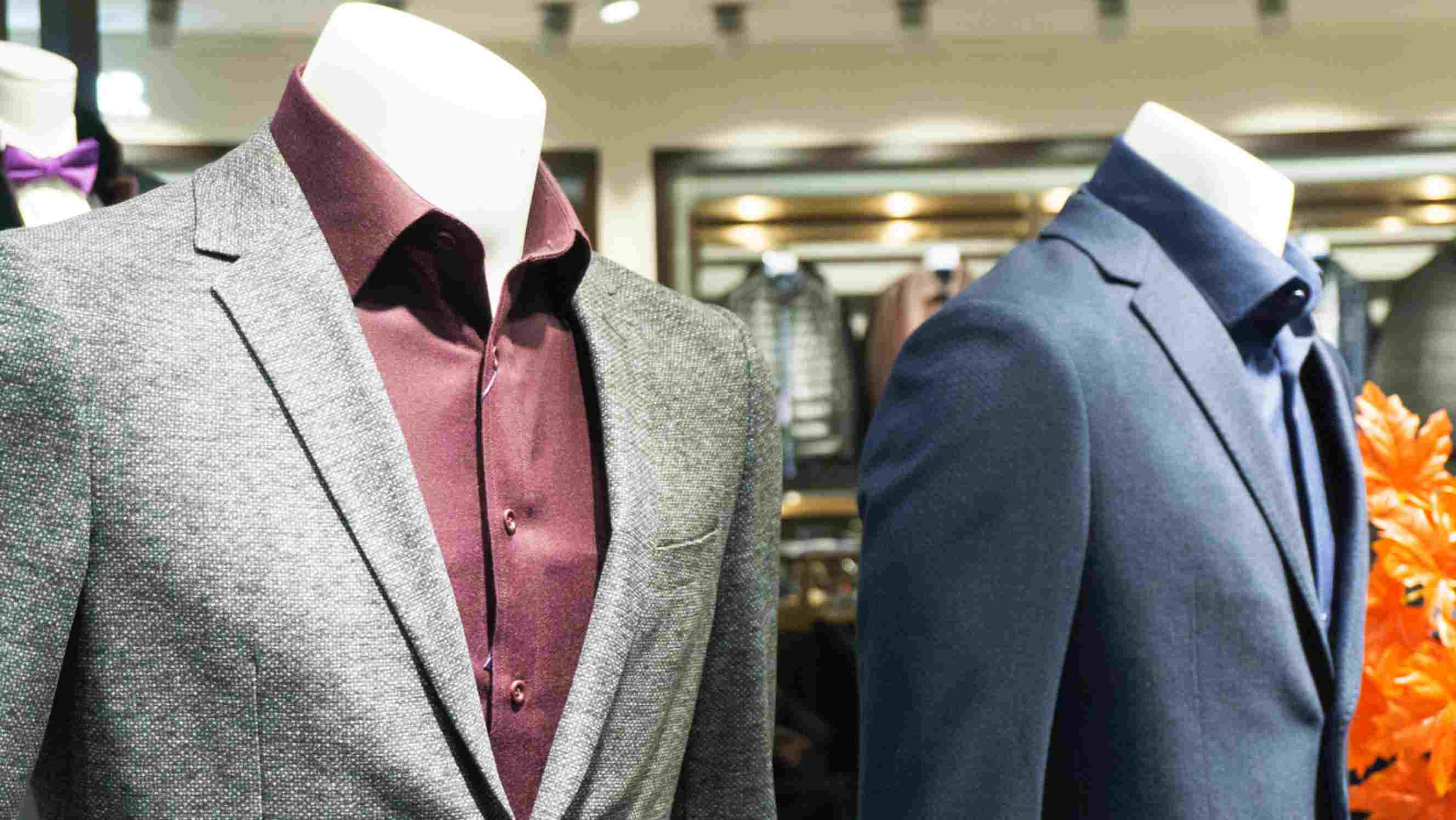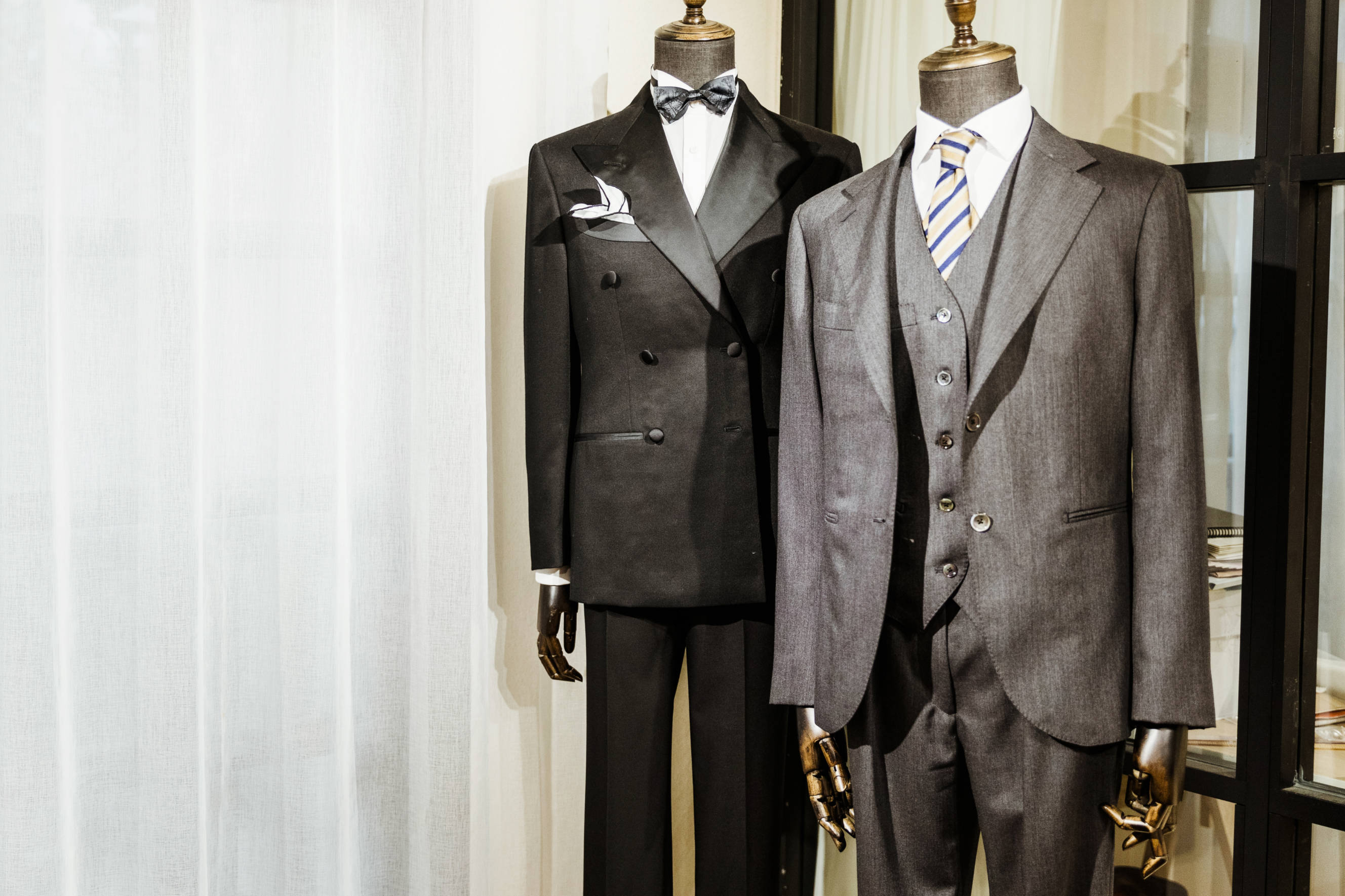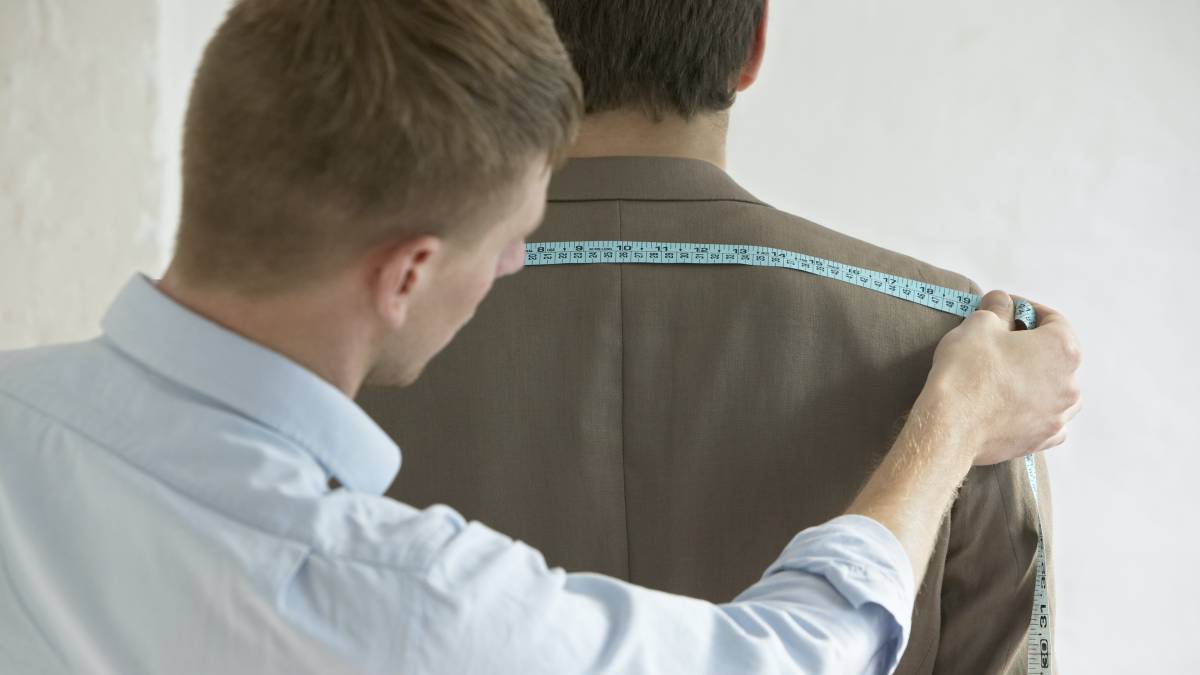- Home/
- Comparisons/
- Suit Tailor/
- Waistcoat vs Vest
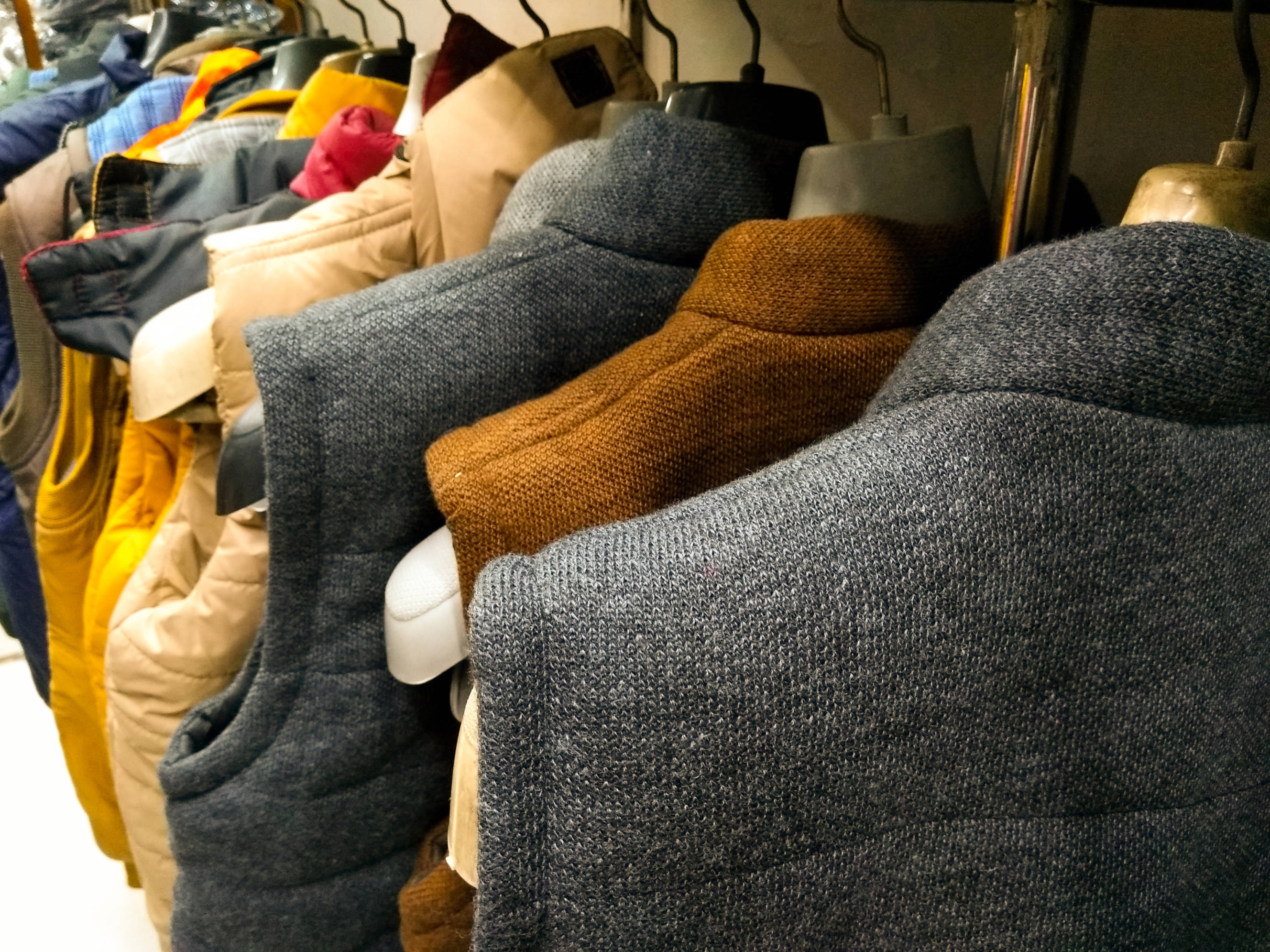
Waistcoat vs vest: What makes them different?
Comparing waistcoats and vests based on design, fit, silhouette, and more.
Hire a suit tailorPublished on

Written by Cielo B.
Staff Writer
Read more about our contributor
Key Facts
- A waistcoat is a formal sleeveless garment with a tailored-fit design. It has front buttons and an adjustable strap at the back.
- A vest is a sleeveless garment with a V-shaped neckline and loose fit design. It can have buttons and zippers or no fasteners for a casual look.
Are you currently looking into some online stores and shopping for vests and waistcoats? Whether you’ll use them for a formal event or a casual get-together, you’ll have to do some digging and find out about their differences so you’ll know if they match your style.
This waistcoat vs vest guide covers all their distinct differences, from design and fit to cost and value, helping you decide which to include in your wardrobe.
What is a waistcoat?
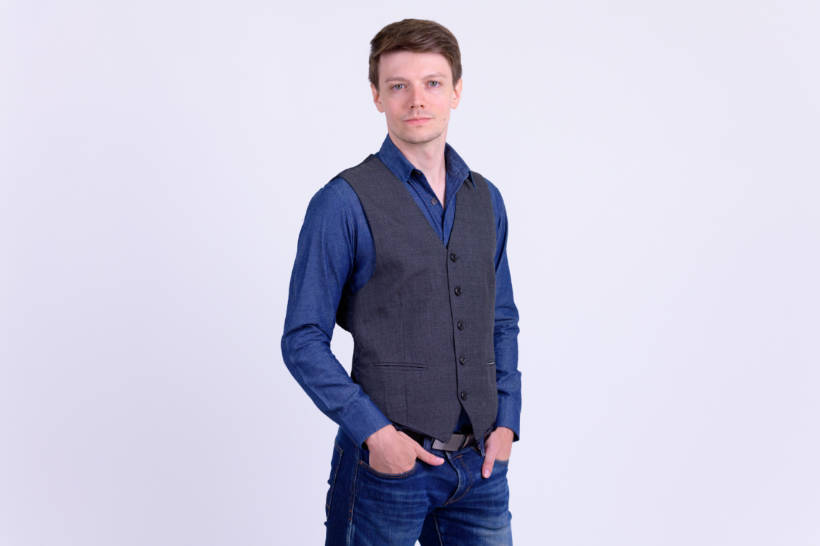 Formal waistcoat paired with a denim shirt for a modern look. (Source: iStock)
Formal waistcoat paired with a denim shirt for a modern look. (Source: iStock)
A waistcoat is a sleeveless garment with front buttons and an adjustable strap at the back. Often worn over a shirt and beneath a suit jacket, this upper-body type of garment was first introduced in the 17th century by King Charles II. The waistcoats back then were long, reaching to the knees and worn as part of a three-piece garment, trousers, and an overcoat.
Today, modern waistcoats have become shorter and less elaborate, with most having a waist-length design. They’re more practical and easier to wear. You can even find a variety of waistcoat outfits for both men and women since there are now many types of modern waistcoats, including:
A single-breasted waistcoat, which features one row of buttons. It’s considered less formal.
A double-breasted waistcoat, which has two rows of buttons. This type is considered more formal.
A horseshoe waistcoat, which is known for its low-cut neckline. It’s commonly worn with formal evening attire.
A tweed waistcoat, which is made from tweed fabric, offers a vintage look.
Back then, waistcoats were used only to cover suspenders, hold up trousers, and hold pocket watches. When belts replaced suspenders and wristwatches replaced pocket watches in the 1920s, many people used waistcoats less often. During this time, two-piece suits with just a jacket and trousers became a fashion trend.
Despite becoming less popular, waistcoats never went away entirely, as they are still worn for formal events like weddings and business meetings.
What is a vest?
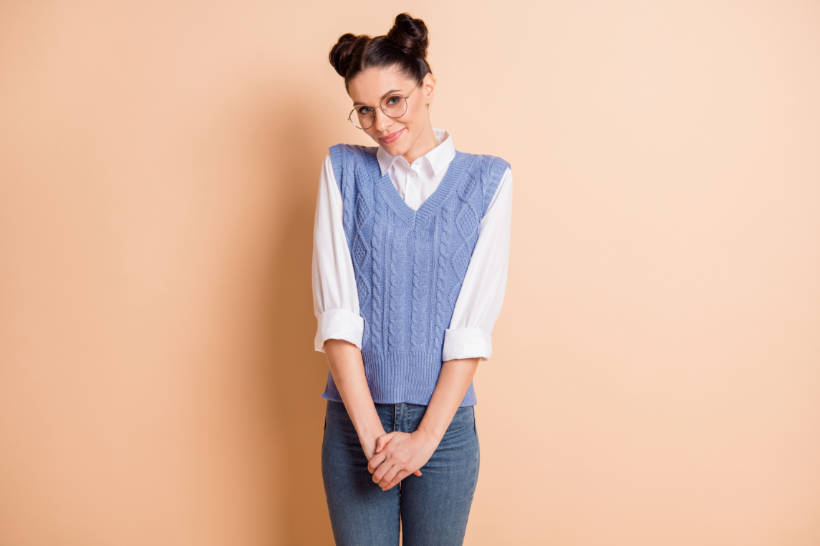 Pastel blue sweater vest layered over a white shirt for a chic look. (Source: iStock)
Pastel blue sweater vest layered over a white shirt for a chic look. (Source: iStock)
A vest and a waistcoat are the same garment because they have similar historical roots, but the term 'vest' is more common in America. It comes from the French word 'veste', which means a jacket or robe, and this terminology was created because of the strong influence of French fashion and culture in American society during the 18th and 19th centuries.
However, you won’t see using vests for strictly only formal events today. These upper-body garments evolved into a more modern design, with many types emerging, including:
A sweater vest, which is a knitted garment without buttons; suitable for business casual settings.
A tuxedo vest, which is colourful and decorative, worn with formal evening wear.
A tweed vest has a casual design made from tweed, giving it a vintage or academic look.
A woven vest is a casual, loose-fitting garment similar to a sweater vest.
Despite having different types, most of them share a similar design feature, such as a V-shaped neckline. However, since fashion has become more versatile in modern times, some vests can have other neckline styles, such as a round crew neckline, turtleneck, or wide boat neck.
Waistcoat vs vest coat: Which one should you wear?
With the historical backgrounds of waistcoats and vests overlapping, distinguishing a waistcoat from a vest coat is now even more challenging. So, here’s a more in-depth guide to help you decide which is more suitable for your wardrobe.
In terms of design
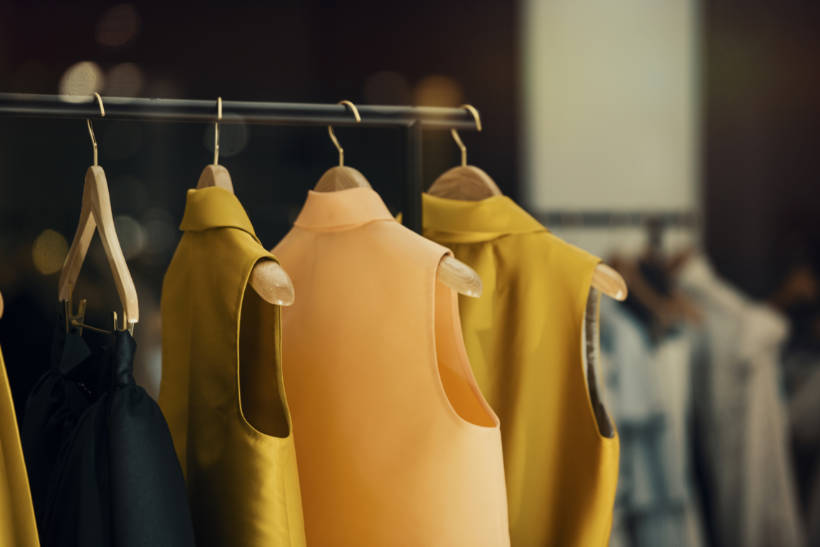 A collection of different styles of waistcoats and vests in yellow and peach tones. (Source: iStock)
A collection of different styles of waistcoats and vests in yellow and peach tones. (Source: iStock)
Waistcoats appear more formal and have many decorative details, such as intricate embroidered patches and ornamental single-breasted or double-breasted buttons. Moreover, some waistcoats have lapels or folded flaps in front, making them look more formal than vests.
You’ll also notice that most waistcoats have an adjustable back design made from a lighter material, like silk or satin. This reduces the bulk and provides comfort while wearing them under a suit jacket.
Meanwhile, vests have more apparent functional elements. They usually feature multiple pockets, while some have quilted designs for added warmth. Like waistcoats, vests can also have buttons. However, some use zippers for a more modern and functional look.
Moreover, vests have a more versatile style compared to waistcoats, as they come in different necklines such as V-neck, collarless, and even turtleneck, catering to diverse fashion preferences.
In terms of fit and silhouette
Since waistcoats appear more formal than vests, they have a more tailored fit. This means they’re made to fit close to your body (particularly around the torso) without feeling too tight. For instance, the neck hole of the waistcoat is designed to fit snugly at the back of the collar of your shirt, leaving no visible gaps, even when you’re moving around.
Moreover, when tailoring a waistcoat, it should fully cover the waistband of your trousers, completely hiding the bottom of your dress shirt underneath. This gives you a more polished and formal look.
On the other hand, vests appear more casual and loose than waistcoats. They sometimes lack zippers, buttons, or any fastening for a more relaxed fit. Moreover, unlike waistcoats, their length varies, so they create a more casual silhouette.
In terms of formality and occasion
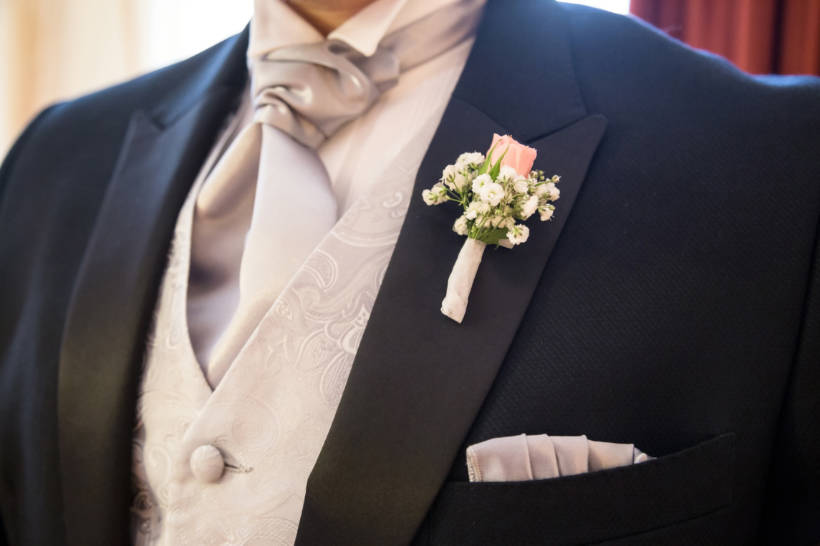 Elegant formal vest paired with a suit jacket, accented with a boutonniere. (Source: iStock)
Elegant formal vest paired with a suit jacket, accented with a boutonniere. (Source: iStock)
Historically, waistcoats were worn by European nobility, but they’re still more suitable for formal events today. For example, you’ll often see a groom and his groomsmen wearing a tuxedo or suit with a waistcoat at a wedding. Moreover, they are typically worn in black tie events with a dinner jacket or in white tie events with a tailcoat.
In business settings, some high-profile figures wear bespoke waistcoats made by suit tailoring experts to add a layer of elegance while attending corporate boardrooms.
Conversely, vests are less formal and ideal for casual and semi-formal events. They usually feature fewer buttons, with some vests having throw-on designs that you can effortlessly put on, so they’re suited for smart casual office environments.
Furthermore, since their designs focus more on comfort and utility, with some having a rugged style, you may use them for hiking, camping, and other fun outdoor activities.
In terms of style
So, how to wear a waistcoat? If you’re going for a formal, traditional look, you’ll have to ensure the colour and fabric of your waistcoat match your suit jacket and trousers for a more cohesive look. Your dress shirt should also be tucked in, and the tie must be worn underneath the waistcoat. Lastly, you may add accessories like tie-pins, adding more sophistication to your style.
You can also dress down your waistcoat to achieve a more smart-casual look. For example, you could wear the waistcoat over a dress shirt without the suit jacket and match it with chinos or khakis.
Meanwhile, vests offer more style flexibility, as they come in many colours and patterns. You can dress them up like waistcoats, in which the jacket and trousers should match the waistcoat, or dress them down by wearing the vest as a standalone piece and pairing them up with jeans.
Another way to style a sweater vest to achieve a smart casual or preppy style is to skip the necktie and pair it up with casual loafers. Subtle accessories like wristwatches and cufflinks can also enhance the look.
In terms of fabric material
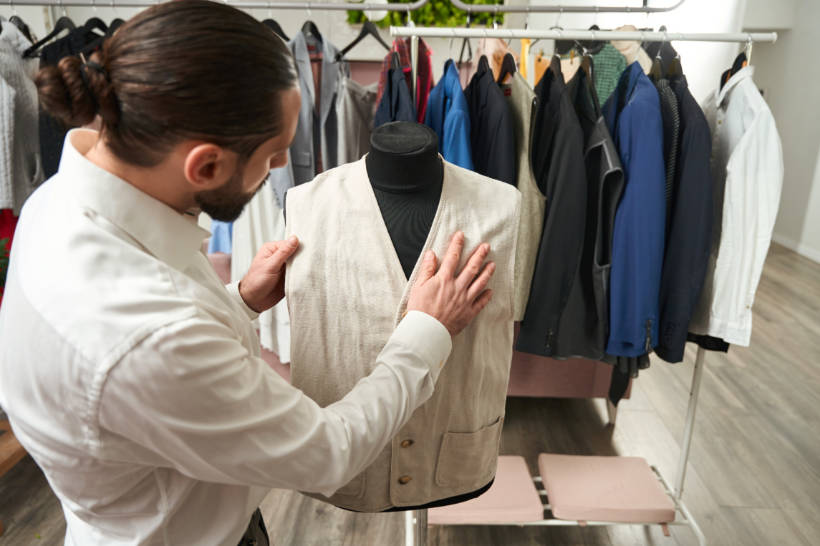 Tailor examines a textured waistcoat, showcasing fabric variety in waistcoats and vests. (Source: iStock)
Tailor examines a textured waistcoat, showcasing fabric variety in waistcoats and vests. (Source: iStock)
As mentioned, waistcoats use more formal fabrics with intricate patterns and textures like pinstripes. Some of the most popular fabric materials for waistcoats include:
Wool, which adds warmth; ideal for classic formal waistcoats.
Silk, which is used for the adjustable strap at the back of the waistcoat, adding a luxurious touch.
Brocade, which is made from a decorative fabric with intricate patterns.
Tweed, which is a rough, woollen fabric with a vintage and textured look.
Conversely, vests use more versatile fabrics, casual patterns and textures like plaids and suede. Some of the most popular fabric materials for vests include:
Cotton, which is a lightweight, breathable and versatile fabric, ideal for warmer climates and smart-casual looks.
Denim, which provides a rugged look, suitable for casual wear.
Polyester, which is made from a durable synthetic fabric; ideal for activewear.
Leather, which offers a bold and stylish look; ideally used as a statement piece.
Fleece, which delivers warmth and comfort and is perfect for casual and outdoor wear.
Knitted Fabrics, which are used in sweater vests provide warmth and are ideal for casual, preppy style.
In terms of price and value
Prices can vary depending on a waistcoat or vest's brand, material, and style. However, waistcoats are more expensive between the two because they are typically made from premium fabrics and require more detailed craftsmanship.
The prices can even be higher if you consider the tailoring cost, which ranges from $3 - $150. Despite the added expense, it’s worth investing in a bespoke waistcoat, whether made-to-measure or tailored, because they are made with durable and quality fabrics, and have timeless style, so you can use them long-term.
Meanwhile, vests are more affordable because there are budget-friendly options with readily available mass-produced pieces. Even if you have them tailored, they’re still less expensive since they require lower-cost materials and a more straightforward construction.
Get your waistcoat and vest perfectly fitted with Airtasker.
You could buy a waistcoat or vest off the rack, but chances are that they might fit perfectly, so they could end up being either too loose or too tight. You can have them altered for a better fit by taking them to a tailor or seamstress.
At Airtasker, finding nearby expert suit tailors is easy—you only have to post a task with your alteration cost budget and preferred service! They have the expertise to handle almost any fabric, ensuring professional workmanship in altering your vests and waistcoats. With their help, you can now enjoy wearing clothes that flatter your body shape!
Learn more about our contributors

Written by Cielo B.
Staff Writer
Cielo is an experienced content writer who has explored various industries throughout her career. Her expertise, founded on a degree in journalism, includes writing about automotive and vehicle maintenance. She’s an avid car enthusiast who loves driving through lush rural areas with her old (but reliable) manual car. Cielo also covers topics like dressmaking, tailoring, and photography since she is a passionate cosplayer who enjoys dressing up as her beloved anime characters.
Waistcoat vs vest
|
Waistcoat |
Vest |
|
|---|---|---|
|
Design |
Formal; often with decorative details like embroidered patches, single or double-breasted buttons, and lapels |
More versatile with functional elements like multiple pockets and quilted designs |
|
Fit and Silhouette |
Tailored fit; snug around the torso to fully cover the waistband of trousers | More casual and loose, often lacks fastenings like buttons or zippers |
|
Formality and Occasion |
Suitable for formal events, including weddings, business meetings, and black/white tie events |
Ideal for casual and semi-formal events, such as smart casual office environments, outdoor activities |
| Style | Typically matched with a suit jacket and trousers; can be dressed down with chinos or khakis for a smart-casual style |
Offers style flexibility; can be worn as a standalone piece with jeans or dressed up like a waistcoat |
|
Fabric Material |
Formal fabrics with intricate patterns and textures |
More versatile fabrics with casual patterns |
|
Price and Value |
Generally more expensive due to premium fabrics and detailed craftsmanship |
More affordable, with budget-friendly options and simpler construction |
FAQs on waistcoat and vest
Yes, you can wear a waistcoat only if you use it for smart-casual settings. But if you’re going to use it for formal events like weddings and black-tie events, ideally, you should wear a waistcoat on top of the dress shirt and under the suit jacket. This is because a traditional waistcoat is typically part of a three-piece suit.
Yes, you can wear a waistcoat with a suit, especially in formal settings, because a waistcoat is traditionally part of a three-piece suit. Just make sure the waistcoat matches your trousers and jacket for a more formal and cohesive look.
One key rule of wearing a waistcoat correctly is to leave the bottom button undone to create a streamlined look. Next, the waistcoat should cover your trouser waistband without making it too restrictive. You should be able to move around comfortably without the dress shirt underneath gaping widely. Lastly, the colour and fabric of your waistcoat should match your trousers and suit jacket for a more formal look.
Find suit tailors, fast
Post a task
Related articles
Related price guides
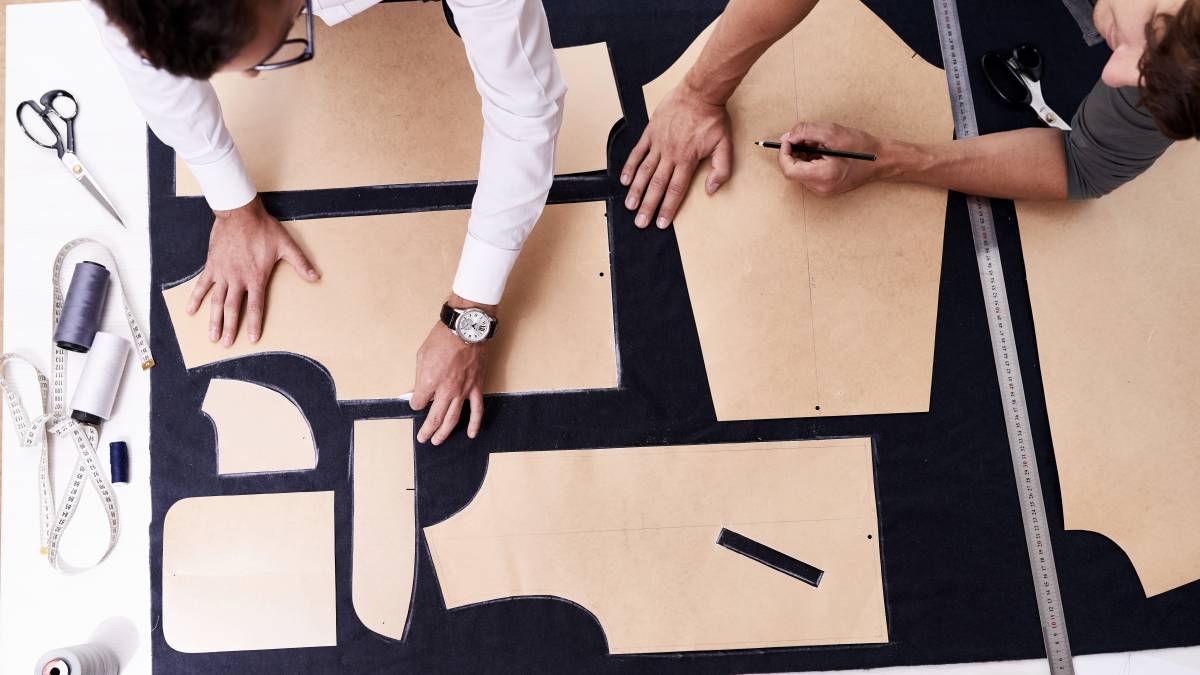
How much does tailoring cost?
Read more
